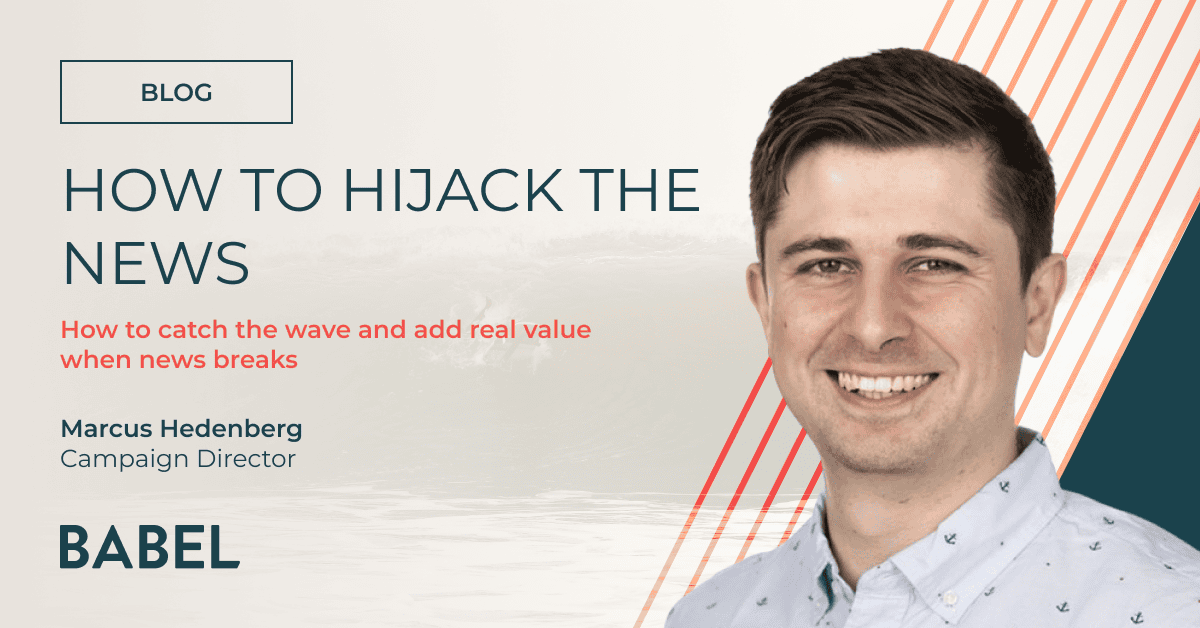
Communicating impact in tech: why your messages must map against resilience
Business resilience (BR), according to McKinsey, ranks as one of the highest priorities for CEOs in 2023. Grappling with the manifold challenges presented by the current business context, that probably comes as no surprise. And I’ll spare listing the range of challenges keeping business leaders up at night – by now we’re all aware.
But resilience is an attribute most typically associated with living systems. Nature, although it continues to be tested, is resilient. Humans are resilient. And that’s partly because we operate a closed-loop system that allows us to see out into the world, intelligently (you’d hope) interpret all the information we gather and take relevant actions that are aligned to our goals, or driven by our values. All of this happens relatively intuitively and at a comparatively speedy pace. Although of course we also have the ability to slow down and act more intentionally.
By becoming truly data-driven, enterprise leaders are now also able to create resilient systems that mirror the responsiveness of our own.
But what does resilience look like in business? And how do we improve it?
A resilient business is one that quickly adapts to disruption while maintaining continuous business operations and safeguarding its people, assets and overall brand equity. Keeping our uncertain macro-environment in mind, it’s easy to think BR is a lofty ambition. We’re seeing rapid change across the economic, technological and legal contexts, but that’s all happening in tandem with more complex social, cultural and demographic changes too (think climate consciousness, shifting consumption patterns and an ageing workforce/tech talent gap).
But as an evolution of business continuity, which plans for specific disruptions, resilience as a principle accepts that we don’t know what’s coming next and need to build the foundations that will allow businesses to absorb stress, recover quickly and even thrive in altered circumstances. Thinking back to the pandemic, it was those with the ability to innovate business models and bounce back that came out the strongest – the brick & mortar retailers pivoting to click and collect are perhaps the most common examples.
At its simplest, BR is responding to two specific imperatives: the need to reduce the risk of downtime and to improve both operational and strategic agility (making resource and asset management decisions more intelligently vs responsiveness that allows better value capture).
Now here’s the tech bit…
CEOs have become far more involved in setting the tech agenda in recent years and that’s because the impact of tech is bleeding into their overall responsibility. The constant risk of cyber threats may keep them up at night. That productivity is dependent on a digitally enabled and well-connected workforce means business networks and infrastructure is their problem too. And if customers are struggling to buy goods and services because of unfriendly UI or a poorly planned software update, well then that’s a business problem too.
But these issues fall squarely into the ‘reducing downtime’ bracket. Increasingly, tech is the main driver for operational and strategic agility also, and this is the bit that’s getting business leaders excited.
Recent tech developments, and democratised access to these innovations, are putting agility at arm’s length. We’ve got rapidly evolving sensors and integrated applications which provide the delivery mechanisms (think intelligent robots and the applications that manage them), and better insight generation, both real-time and predictive (via virtually unlimited storage and processing in the public cloud).
With these two principles combined, you get the responsiveness which feeds resilience, but crucially helps capture new value.
In practice, this can mean the ability to respond more closely to the demand or supply environment, which can drastically improve the quality and speed of procurement decisions. In telecoms, where one of our clients has been advocating customer-centricity for years, using these principles an operator can offer more relevant tariffs automatically based on location data and other individual consumption patterns.
Coming back to the living systems analogy, we’re at the point where we can now at least conceptualise, if not already orchestrate, a whole organisation that functions in the way we do. By leveraging real-time data, interpreting it to understand what course of action should be taken and then acting on it, almost instantaneously, in the service of an overarching strategic or commercial goal.
But what’s the point and why does this matter for marketers?
The concepts we’re talking about here aren’t new at all. The capabilities that underpin BR in our modern context have been under development for years. What’s changed is the level of uncertainty in the world and so the urgent need for resilience. What’s also changed is how much more the business is intertwined with technology.
In the b2b realm, with falling investment in tech, layoffs, ever-expanding regulation and a raft of other issues, the tech companies that will be successful are those that clearly communicate their resilience, and how they’re building it for their customers.
To a large extent that is a comms challenge. There is a temptation in our industry to only want to speak about shiny use-cases, to demo the latest tech and to involve only your most prolific customers. But as the world gets murkier, your stakeholders will place an even greater emphasis on impact and the outcomes you’re delivering. Resilience can provide a useful narrative pillar to map against.
At Babel, we’re in the business of unearthing and communicating impact. We’ve been working more closely with our clients; running workshops, fine-tuning proactive and reactive messaging and training our spokespeople for engaging delivery in response to the sector’s recent woes.
But as we say here, it’s never about the tech. Your customers are rarely interested in the technology itself; what they want is business benefit and that has never been more true.
The tech ecosystem must continue to map its solutions against business problems and speak in a way that engages a growing number of IT-decision makers.
Written by Ashwinder Bedi
Senior Campaign Manager





